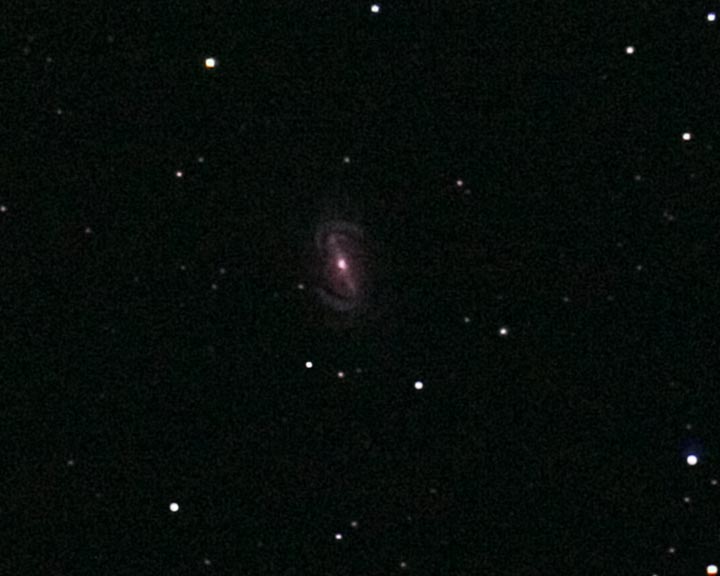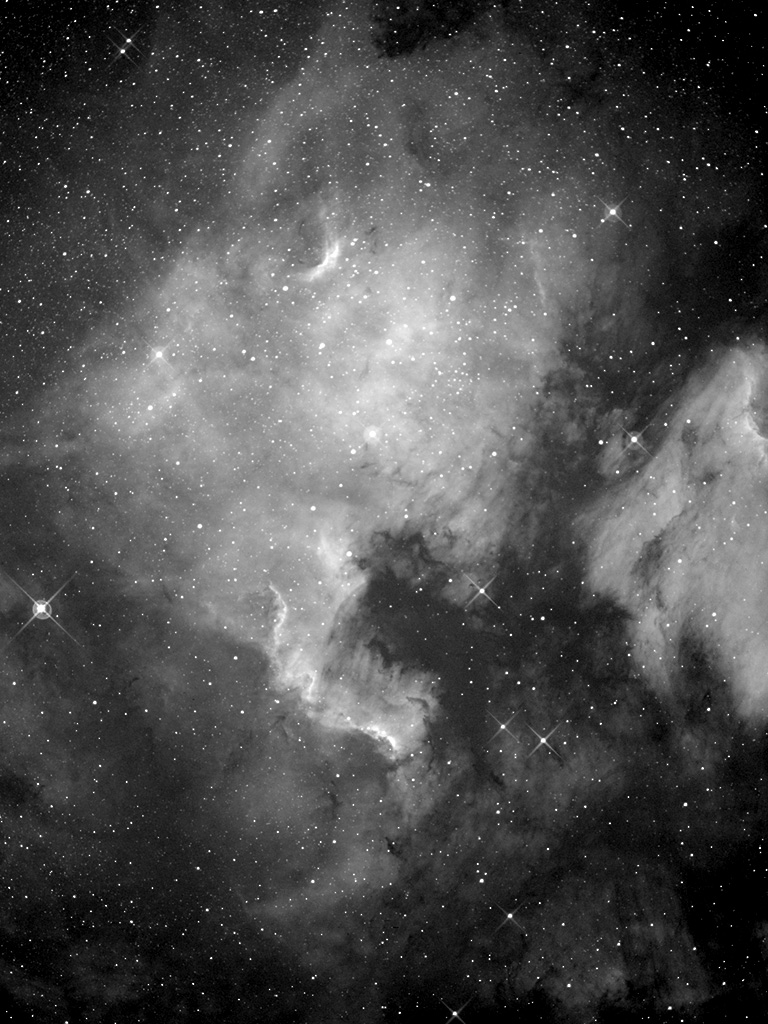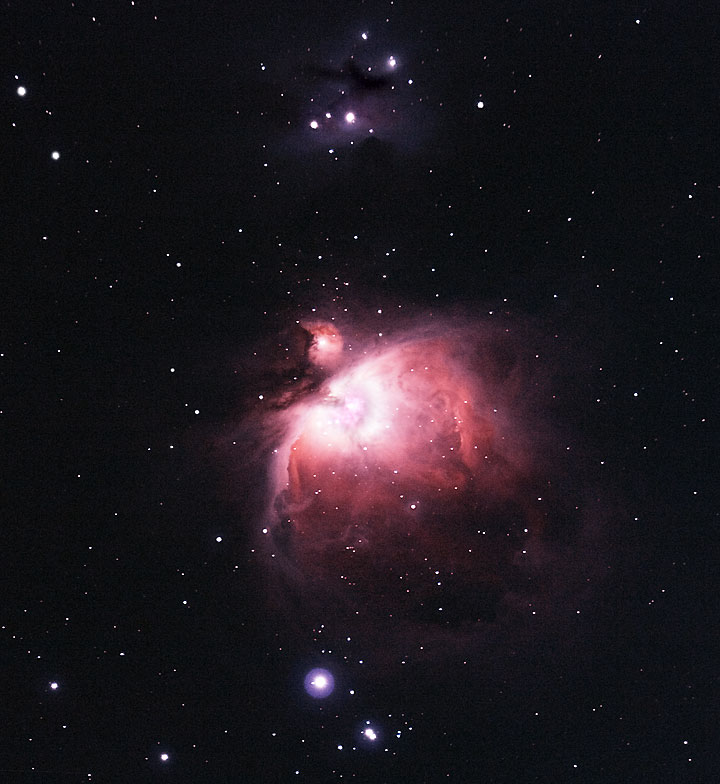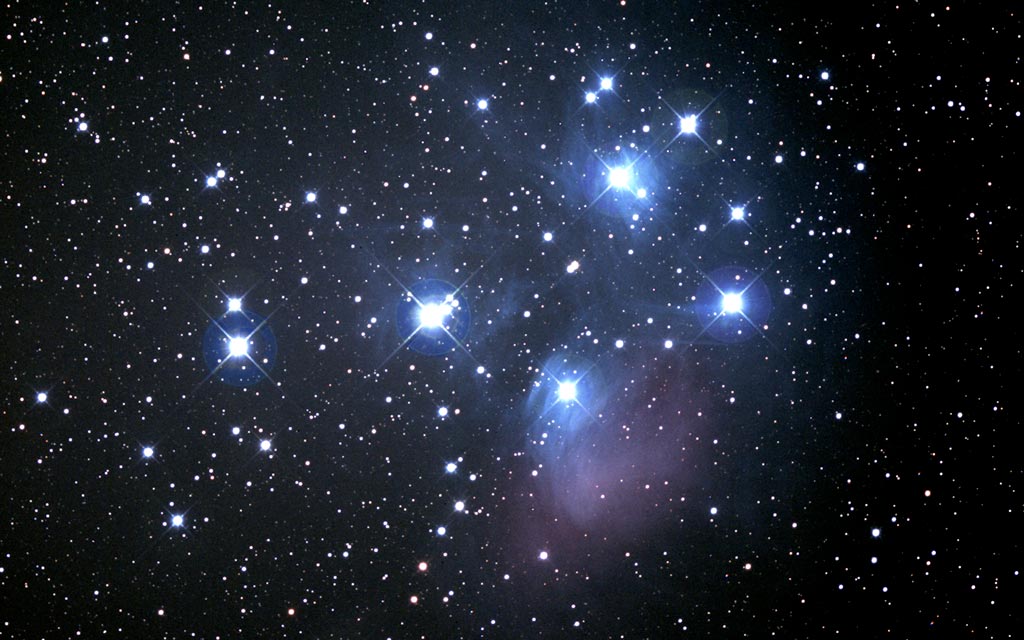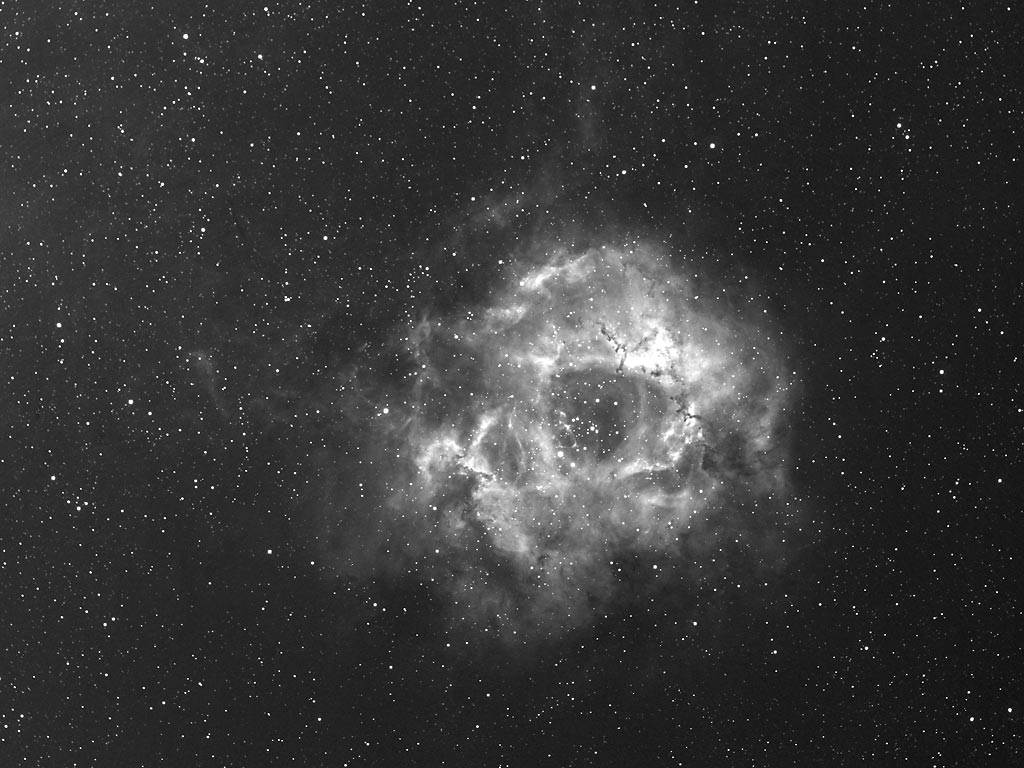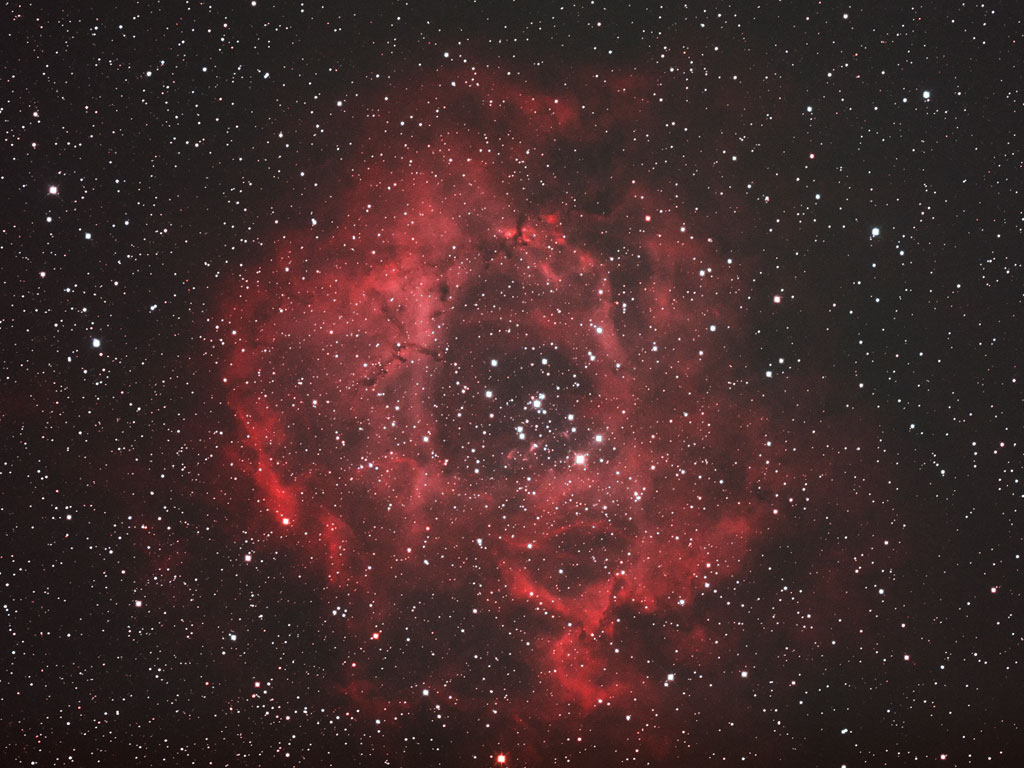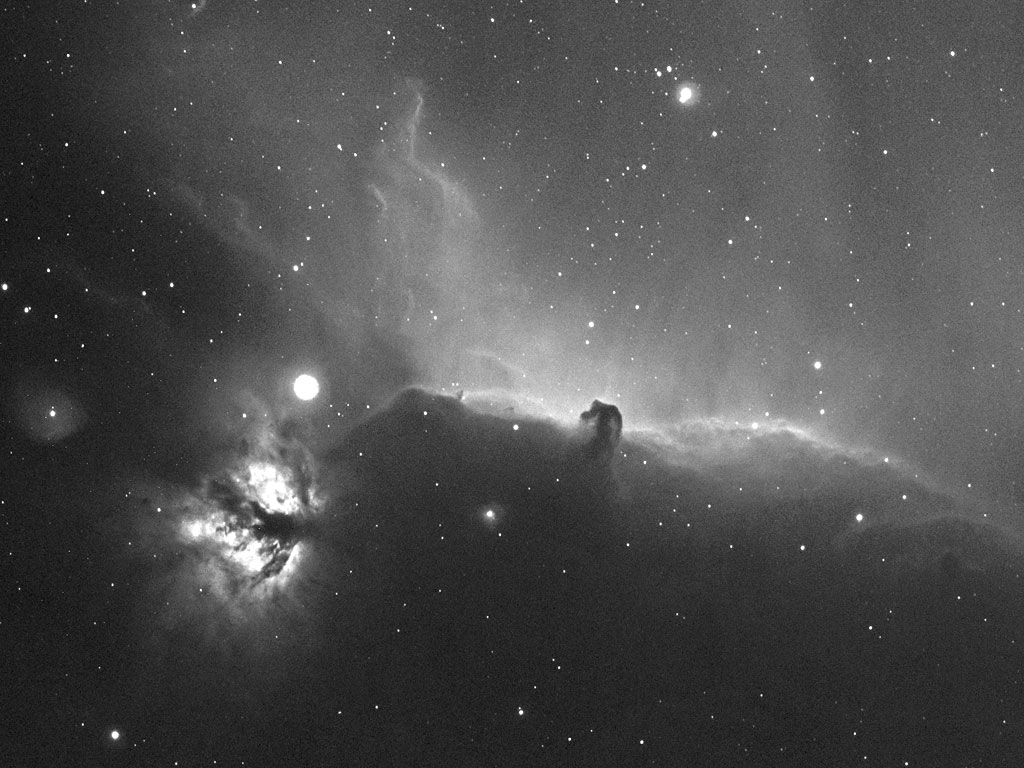I made this photo between August 31 and September 7, 2007. The largest mass is
NGC 7000, The North American Nebula. It isn’t difficult to imagine
the outline of North America in this nebula, especially Florida,
the Gulf of Mexico, and Central America. On the right is IC 5067,
The Pelican Nebula. His knobby head, dark eye, and bill are quite
plain.
The word nebula comes from Latin, where it means mist.
In German, Nebel means fog. From the Latin word we
derive nebulous, which means unclear, vague, or ill-defined.
That's a very apt description of the appearance of a nebula in a telescope.
Amateur astronomers often call them faint fuzzies because
that's what they mostly look like through the eyepiece of a telescope—faint,
indistinct patches of light. It takes a photograph to give some sense
of the true appearance and extent of a nebula. The plural of nebula may be given as nebulae or nebulas.
NGC 7000 consists of vast clouds of hydrogen gas and dust. The hydrogen
is glowing because it is being bombarded by radiation from stars, many
of which are unseen in this photo because they are blocked by the hydrogen
and/or the dust. The radiation causes the hydrogen to emit photons. That makes NGC 7000 an emission nebula, i.e., one whose gas emits light
due to bombardment by radiation from stars. Another kind of nebula is a reflection nebula. Much of the light in this photo is in a very narrow part of the red end of the spectrum
known as the Hydrogen Alpha (Hα) band, and the sub-frames that make
up this photo were taken through a Hydrogen Alpha (Hα) filter that
transmits only a 4.5 nanometer-wide portion of the spectrum centered
at 656.3 Ångströms. For the most part the dark areas are not
black sky, but dark nebulæ, clouds of dust that obscure the light
of the glowing hydrogen gas and the background stars in some areas.
There are also at least three named star clusters in this photo. The most
obvious is NGC 6997, which is a large, widely spaced open cluster situated
due north of the “Florida” peninsula. NGC 7000 is about 65 light years
across, while the entire nebula complex (which does not fit in this
image) is 130 light years across. This nebula complex is believed to
be 1,900 light years (LY) from Earth. That’s next door relative to
the scale of the Milky Way Galaxy (100,000 LY across), not to mention
the large scale of the Universe itself. Still, the photons that made
this image traveled for 1,900 years without hitting anything until
they encountered my telescope mirror. This picture is special to me
because it is a First Light image, that is, the
inaugural image from a new telescope. That telescope, a
Takahashi Epsilon 180ED, and the SBIG STL-11000M camera that I used to make this picture, are
shown on this page. I believe that this is also my first photo with in the light of Hydrogen Alpha. Update: I made a new Hα photograph of the NGC 7000 region on 24-25 September, 2010. |
|
